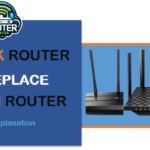Introduction Are you tired of paying monthly rental fees for your Verizon router? Looking to upgrade to a more powerful and feature-rich networking solution? Replacing your Verizon-provided router with a TP-Link router can be an excellent way to improve your home network while saving money in the long run. In this comprehensive guide, we'll walk you through the process of … [Read more...] about Tp-link Router to Replace Verizon Router: Full Explanation
Technology
Computer Systems Technology
Introduction Computers are very important entities in modern society. Starting from personal computers to large servers, every field has changed in the way it functions, communicates and even entertains. Computer systems technology is the focus of this article with information regarding the functioning of computers, types of system, hardware and software, … [Read more...] about Computer Systems Technology
Granular recovery technology (What does mean this Technology)
Introduction The actual meaning of the granular recovery technology is the process of using technology to ‘pull out’ data at the grain level from electronic devices such as computer hard drives, SSD drives, cellphones, flash drives, CD’s and other digital storage media. Granular recovery enables the recovery of specific documents, mails, photos; emails;; personal documents … [Read more...] about Granular recovery technology (What does mean this Technology)
Website Designs in Melbourne: A Comprehensive Guide to Web Design in Melbourne
In today’s digital-first world, a solid online presence is no longer discretionary for businesses – it’s essential. Whether a bit of trade or an expansive organisation, your site serves as the point of interaction with potential clients. For companies Website Designs in Melbourne, where competition over businesses is furious, having a well-designed site is significant for … [Read more...] about Website Designs in Melbourne: A Comprehensive Guide to Web Design in Melbourne
Deep offshore technology
Introduction Offshore drilling has otherwise made it possible for the exploration of oil and gas from water areas and up to a depth of 500 meters. Nevertheless, new reserves are more challenging to find onshore and in shallow waters so companies are willing to expand oltechnology and go deeper into ultra-deep water. As for the particularities of drilling and production, the … [Read more...] about Deep offshore technology





